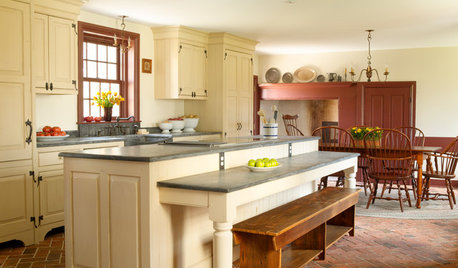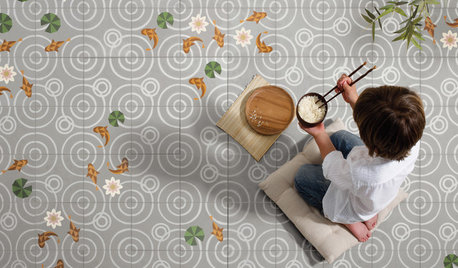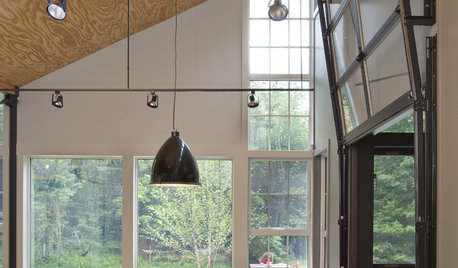Review of Eugenia Bone's Well-Preserved
readinglady
14 years ago
Related Stories

KITCHEN DESIGNKitchen of the Week: Modern Conveniences and a Timeless Look
A 1700s Pennsylvania kitchen is brought up to date, while custom cabinets and rustic finishes help preserve its old-time charm
Full Story
TILEWorld of Design: How Modern Geometric Designs Are Reinventing Cement
Intricate and eye-catching, the patterns of today’s cement tiles mark a break with their past while preserving an age-old technique
Full Story
REMODELING GUIDESConsidering a Fixer-Upper? 15 Questions to Ask First
Learn about the hidden costs and treasures of older homes to avoid budget surprises and accidentally tossing valuable features
Full Story
KITCHEN DESIGNHouzz Call: What’s Cooking in Your Kitchen?
Most of us turn to recipes, videos and culinary shows when we cook. Where do you set your cookbook, tablet or TV screen?
Full Story
KITCHEN DESIGNKitchen of the Week: A Budget Makeover in Massachusetts
For less than $3,000 (not including appliances), a designing couple gets a new kitchen that honors the past
Full Story
MIDCENTURY HOMESHouzz Tour: An Eichler Remodel Spawns a Design Career
A homeowner finds her true calling upon redesigning her family's entire California home
Full Story
ROOM OF THE DAYThe Top 20 Rooms of the Day From 2015
We invite you to revisit your most beloved rooms over the past year
Full Story
MIDCENTURY HOMESHouzz Tour: An Eichler's Interior Gets a Major Overhaul
Extensive interior work gives a 1973 home in California better flow and a brighter outlook
Full Story
ARCHITECTUREThe Hidden Factors Driving Your Home's Design
Before you can talk aesthetics on a new build or remodel, you've got to open the floor to rules and requirements
Full Story
ARCHITECTURERoots of Style: Do You Live in a Minimalist Traditional House?
Cottages, bungalows, farmhouses ... whatever you call them, houses in this style share several characteristics. See how many your house has
Full Story


SuzyQ2
digdirt2
Related Discussions
Review Our Floor Plan ... Please?!
Q
HELP Questions about canning ~ fruits, sauces, etc.
Q
New Recipe Review - June 2010
Q
June 2014 New Recipe Review
Q
dgkritch
melva02
ruthieg__tx
readingladyOriginal Author
readingladyOriginal Author
susancol
dafygardennut
sue_ct
ksrogers